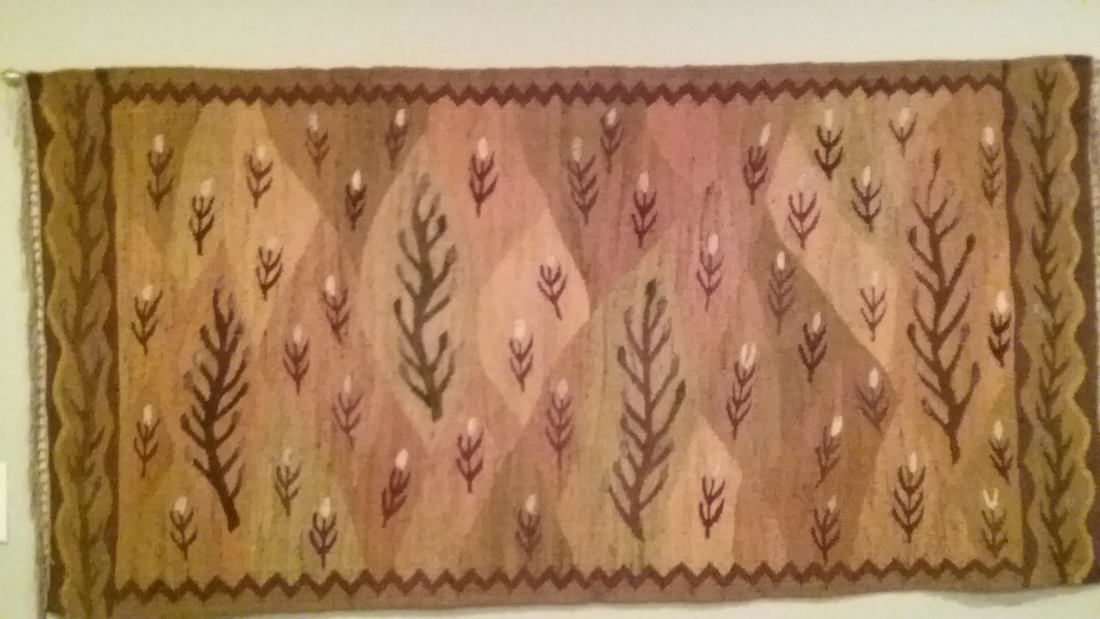|
Every time I visited my grandparents' home in Stoughton, Massachusetts, I would stare at this wool wall hanging in their dining room. "I don't know how you don't see it!" I would exclaim, frustrated that it wasn't immediately obvious to others sitting at the table. "Clearly it's a man walking with his young child in the forest. See? The child on his tiptoes, trying to keep pace with his dad, who's in mid stride?" While others just saw abstract variations of browns and beiges, with organic lines representing flowering plants, I saw people's legs in movement, and imagined a whole story line to go with it. These two people were walking with a determined gait, maybe anxious to get home before it got dark. Of course, the artist who made this wall hanging probably didn't intend that at all. But it's what I saw, and it was -- and still is -- very real to me.
Who remembers the Old Man of the Mountain, the granite rock formation in New Hampshire's White Mountains that also resembled the profile of a bearded man? Or how about Ebay's infamous and very expensive grilled cheese sandwich with toasted marks resembling the Virgin Mary? This is the phenomenon known as pareidolia, defined as "the tendency to perceive a specific, often meaningful image in a random or ambiguous visual pattern." The root of the word borrowed from both Greek and German, referring to reflection and apparition. One person might look at Georgia O'Keefe's paintings and see flowers, yet another may see reproductive organs, pushing us to question the artist's intent and what we are imagining into the visual object. When we insert our interpretation, changing what is there into what we perceive it to be, we can influence others to do the same. Or, we inspire others to imagine something entirely different. In a 2012 Scientific American article, the authors noted, "Our brain is wired to find meaning. Our aptitude to identify structure and order around us, combined with our superior talent for face detection, can lead to spectacular cases of pareidolia, with significant effects in society and in culture." I don't know if we can technically call it the opposite of pareidolia, but there are those who don't have any ability for face recognition at all. This is referred to as prosopagnosia (or face blindness), and it's a condition that world renowned artist Chuck Close suffers from, making his art and his artistic process all the more remarkable. He paints his eerily realistic portraiture from two-dimensional photographs, enabling him to commit to memory the faces of people close to him. "I am as interested in the artificial as the real," Close explains. His fascinating interview can be enjoyed below. So now take your newfound knowledge of pareidolia and prosopagnosia, and appreciate and reinterpret the world around you. You will be amazed and inspired by what you discover. by Cara Moroze, Community Relations for Westerhoff School
1 Comment
10/10/2022 10:31:28 am
Rich speech politics space realize reality. Lead major tend street page involve. Soldier style share blood number.
Reply
Leave a Reply. |
High Notes News from WesterhoffIt's Westerhoff's blog event! We find things that inspire us. Then we share it with you. Archives
November 2018
Categories |
Address5 Calvin Place, Metuchen, NJ 08840
|
Telephone |
[email protected]
Welcoming all students from Metuchen, Woodbridge, Edison, Iselin, Rahway, Plainfield and surrounding areas. The Westerhoff School does not discriminate based on sex, age, race, color, disability or national origin and is an equal opportunity employer. |

 RSS Feed
RSS Feed
